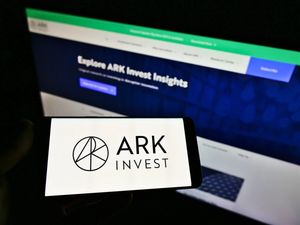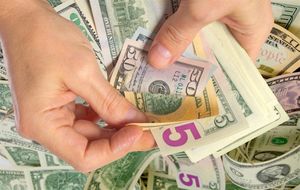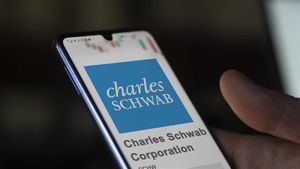
The global financial markets are buzzing with unprecedented activity in the precious metals sector, as gold aggressively pushes towards a historic $4,000 per ounce valuation and silver rapidly approaches its significant $50 per ounce milestone. As of September 29, 2025, these metals are not just witnessing price appreciation but are reflecting a profound shift in investor sentiment, driven by a complex interplay of macroeconomic factors, geopolitical tensions, and evolving monetary policies.
This remarkable surge signals a renewed confidence in tangible assets as hedges against inflation and economic instability. For investors, the immediate implications are a mix of excitement and caution, as the metals market enters a potentially transformative phase, promising both substantial opportunities and increased volatility. The journey towards these record highs underscores a broader narrative of risk aversion and a flight to safety that is reshaping investment strategies worldwide.
A Historic Ascent: Unpacking the Gold and Silver Rally
The ascent of gold and silver to their current elevated positions has been a journey marked by a confluence of significant global events and shifting economic paradigms. As of September 29, 2025, gold is trading around $3,819.89 per troy ounce, reflecting a staggering 44.93% year-on-year increase. Silver, not to be outdone, has surged to $46.78 per troy ounce, marking a nearly 50% gain over the past year and nearing its all-time high of $49.51 from April 2011.
The timeline of this precious metals rally traces back to persistent inflation across major economies, which has cemented gold's role as an indispensable inflation hedge. Expectations of interest rate cuts by the US Federal Reserve, particularly in October and December 2025, have further bolstered gold's appeal by reducing the opportunity cost of holding non-yielding assets. Geopolitical tensions, including ongoing conflicts in Ukraine and the Middle East, coupled with unpredictable US trade policies and concerns over Russia-NATO relations, have intensified safe-haven demand. Moreover, a notable de-dollarization trend, where central banks increasingly diversify their reserves away from the US dollar, has significantly contributed to gold's accumulation. Gold first breached $3,000 per ounce in March 2025, setting a new all-time high of $3,831.28 in September 2025.
Silver's dramatic surge is equally compelling, driven by both its monetary properties and robust industrial demand. Its critical role in burgeoning sectors such as solar panels, electric vehicles (EVs), and 5G technology ensures sustained demand, with the solar industry alone accounting for 16% of global demand. The silver market has also grappled with consecutive annual supply deficits since 2021, with a substantial shortfall of 184.3 million ounces in 2023, a trend expected to continue. This fundamental supply-demand imbalance, combined with its safe-haven appeal and the spillover effect from gold's rally, has propelled silver's price. Silver jumped over 30% since the beginning of 2024, pushing above $39 per ounce in June 2024 and reaching above $46 per ounce by late September 2025.
Key players in this market include central banks, which have been on an unprecedented gold buying spree, acquiring over 1,000 metric tons annually since 2022. Emerging market central banks, like those in India, China, and Türkiye, are leading this charge to diversify reserves. Major mining companies, such as Andean Precious Metals Corp. (TSX: APM), have reported significant revenue increases directly attributable to higher gold and silver prices. Investment inflows into gold and silver ETFs have also surged, with gold ETFs alone seeing $50 billion in inflows in 2025, reflecting strong investor confidence. Initial market reactions have been overwhelmingly bullish, with analysts emphasizing gold's role as an "everything hedge" and predicting silver to remain undervalued with substantial upside potential. The surge has, however, put pressure on industries like the photovoltaic (PV) sector, prompting efforts to reduce silver usage in module manufacturing.
Corporate Fortunes: Winners and Losers in the Precious Metals Boom
The meteoric rise of gold and silver prices, with gold eyeing $4,000 and silver surging towards $50 as of September 29, 2025, is creating a clear delineation of winners and losers across the global corporate landscape. Mining companies, particularly those focused on precious metals, stand as the primary beneficiaries, poised for significant gains due to operational leverage. As metal prices soar, their revenues increase disproportionately to relatively stable production costs, leading to expanded profit margins, robust cash flows, and potentially higher shareholder returns through dividends and increased valuations of their reserves.
Senior gold miners are at the forefront of this windfall. Giants like Newmont Corporation (NYSE: NEM), the world's largest publicly traded gold miner, and Barrick Gold Corporation (NYSE: GOLD), a major diversified precious metals miner, are experiencing enhanced profitability. Companies such as Agnico Eagle Mines Limited (NYSE: AEM), with its policy of no-forward gold sales, gain full exposure to the higher prices, while Alamos Gold Inc. (NYSE: AGI) and Kinross Gold Corporation (NYSE: KGC) also stand to benefit significantly. Similarly, primary silver producers are witnessing a substantial boost. Pan American Silver Corp. (NASDAQ: PAAS), one of the world's largest primary silver producers, and First Majestic Silver Corp. (NYSE: AG), a pure-play silver miner, are seeing their revenues and profit margins surge. Hecla Mining Company (NYSE: HL) and Coeur Mining, Inc. (NYSE: CDE) are also well-positioned to capitalize on silver's ascent. Royalty and streaming companies, like Wheaton Precious Metals Corp. (NYSE: WPM) and Franco-Nevada Corporation (NYSE: FNV), which offer exposure to precious metal prices with reduced operational risk, are also experiencing a boon.
Conversely, industries heavily reliant on silver as a raw material face increased input costs, potentially squeezing profit margins if these costs cannot be effectively absorbed or passed on to consumers. High-volume industrial users of silver, such as solar panel manufacturers, electronics companies producing smartphones and computers, and automotive manufacturers, particularly those in the electric vehicle (EV) sector, will see their manufacturing costs rise. While silver's critical role in these high-tech applications due to its superior conductivity and reflectivity makes it largely irreplaceable, the continuous price hike could necessitate innovation in material usage or lead to higher end-product prices. For example, the photovoltaic (PV) sector is already being pushed to reduce silver usage in modules.
Furthermore, jewelry retailers and manufacturers, such as Titan Company (NSE: TITAN) in India, may face headwinds as higher gold prices could dampen consumer demand for gold jewelry, leading to shifts towards lighter or lower-carat options. Companies with higher All-in Sustaining Costs (AISC) in mining, though likely still profitable at $4,000 gold, might see less pronounced benefits compared to their lower-cost counterparts. The overall impact underscores the interconnectedness of commodity markets and the profound effects that significant price movements in key raw materials can have across diverse sectors.
Broader Implications: A Shifting Global Financial Landscape
The current trajectory of gold eyeing $4,000 and silver surging towards $50 as of September 29, 2025, extends far beyond mere price movements, reflecting profound shifts in broader industry trends and global economic dynamics. This rally is deeply intertwined with persistent inflationary concerns, as investors increasingly turn to precious metals as a formidable hedge against the erosion of purchasing power and the weakening of fiat currencies, notably the US dollar. The ongoing geopolitical instability, marked by international conflicts and trade disputes, further intensifies safe-haven demand, positioning gold and silver as critical assets in times of uncertainty.
A significant trend contributing to this surge is the aggressive accumulation of gold by central banks, particularly in emerging markets, as a strategic move to diversify reserves away from the US dollar. This de-dollarization trend signals a growing skepticism towards traditional currency systems and a potential recalibration of global financial power. Furthermore, the anticipation of US Federal Reserve interest rate cuts in late 2025 is making non-yielding assets like gold and silver more attractive by reducing the opportunity cost of holding them. Silver's dual role as a precious metal and a critical industrial commodity, especially in green technologies such as solar energy and electric vehicles (EVs), is creating a structural supply deficit, highlighting its increasing strategic importance and potential supply chain vulnerabilities.
The ripple effects of this precious metals surge are extensive. Gold and silver mining companies, including major players like Barrick Gold Corporation (NYSE: GOLD), Newmont Corporation (NYSE: NEM), and Pan American Silver Corp. (NASDAQ: PAAS), are experiencing a substantial boost to their revenues and profit margins, which could incentivize increased exploration and production. Conversely, industries heavily reliant on silver as an industrial input, such as solar panel manufacturers and electronics companies, face rising operational costs, potentially leading to higher consumer prices or innovation in material science to reduce silver content. The strength in precious metals could also divert capital from other asset classes, like equities and bonds, as investors seek perceived safer havens.
From a regulatory and policy standpoint, a sustained rally in precious metals might prompt central banks to re-evaluate their monetary policies, especially if the price surge is interpreted as a sign of entrenched inflation. Governments and industries might also explore establishing strategic reserves for silver, given its critical role in green technologies and projected supply deficits. Historically, the current market shows striking similarities to the 1970s gold boom, characterized by multiple record-breaking prices, significant monetary uncertainty, and geopolitical catalysts. The post-dot-com recovery (2003-2008) and the periods surrounding the 2008 Global Financial Crisis and the COVID-19 pandemic (2020) also offer parallels, demonstrating gold's and silver's roles as safe havens during economic and political turmoil. Analysts often note silver's greater volatility and potential for higher percentage gains during bull markets, suggesting it might have more room to catch up to gold, especially if the gold-to-silver ratio continues to compress.
The Road Ahead: Navigating the Future of Precious Metals
As gold eyes the $4,000 mark and silver surges towards $50, the future trajectory of these precious metals is poised for continued dynamism, shaped by a complex interplay of macroeconomic forces, geopolitical developments, and evolving industrial demands. In the short term (late 2025 - early 2026), analysts widely anticipate gold to sustain its positive momentum, with targets ranging from $3,800 to $3,900 and a stabilization within the $3,500-$4,000 range. A decisive breach of $4,000 is projected by Q2 2026, driven by persistent safe-haven demand and central bank accumulation. Silver, exhibiting even greater volatility and upside potential, is forecasted to reach $40-$50 per ounce by year-end 2025, with a breakout above $50 potentially triggering a rapid ascent towards $75-$100 in the medium term.
Looking further ahead into the long term (2026-2030 and beyond), the prospects for both metals remain robust. Gold is expected to surpass $4,000 by mid-2026, with some projections even stretching to $5,000-$7,000 per ounce by 2029-2030, underpinned by persistent global debt, central bank diversification, and ongoing geopolitical fragmentation. Silver's long-term outlook is equally optimistic, with possibilities of trading in the hundreds of dollars per ounce range within the next 5 to 10 years, primarily fueled by the structural supply deficit driven by its burgeoning industrial demand in green technologies.
For investors, strategic pivots and adaptations are paramount. Portfolio rebalancing to include a higher weighting in precious metals, typically 10-15% with a gold-to-silver split, is advisable for long-term wealth preservation. A measured approach of gradual accumulation during price dips is recommended for new investors. Understanding the inherent volatility, especially of silver, is crucial; while gold offers stability, silver presents a higher-risk, higher-reward profile. Precious metals will continue to serve as vital hedges against inflation, currency debasement, and geopolitical instability, offering portfolio protection against market downturns.
Industries, particularly mining and those reliant on silver, must also adapt. Mining companies will likely prioritize maximizing production efficiency and exploring new deposits to capitalize on high prices, potentially requiring significant capital expenditure to address silver supply constraints. Industrial users of silver in sectors like electronics, solar, and EVs will face increasing input costs, necessitating research into alternative materials, efficiency improvements in silver usage, or adjusting product pricing.
Concluding Thoughts: Enduring Appeal in Uncertain Times
The unprecedented surge of gold eyeing $4,000 and silver surging towards $50 as of September 29, 2025, marks a pivotal moment in the global financial markets. Key takeaways include the consistent record-breaking prices for gold, silver's impressive outperformance driven by industrial demand, and the confluence of factors such as anticipated Federal Reserve rate cuts, a weakening US dollar, persistent inflation, and escalating geopolitical tensions. The robust demand from central banks, actively diversifying away from the US dollar, further solidifies the bullish sentiment surrounding these precious metals.
Moving forward, the market consensus remains largely bullish for both gold and silver. Gold is expected to consolidate its position and push towards $4,000, while a decisive break above $50 for silver is anticipated to unleash significant further upside, potentially towards $75-$100. This rally underscores a fundamental revaluation of precious metals' role in the global financial system, reasserting their traditional status as safe-haven assets amidst economic instability and geopolitical fragmentation. Silver's dual identity as both a monetary and critical industrial metal, particularly for green technologies, provides a strong fundamental underpinning to its sustained rally.
For investors, the coming months will require vigilance and strategic positioning. A thoughtful portfolio allocation, potentially increasing exposure to precious metals, is advisable for wealth preservation and diversification. Investors should consider various avenues, including physical holdings, ETFs like iShares Silver Trust (NYSEARCA: SLV) and SPDR Gold Shares (NYSEARCA: GLD), and mining stocks such as Newmont Corporation (NYSE: NEM) and Pan American Silver Corp. (NASDAQ: PAAS). While the long-term outlook is overwhelmingly positive, investors should be prepared for short-term volatility and potential corrections. Close monitoring of Federal Reserve policy, inflation data, US dollar strength, and geopolitical developments will be crucial. Specifically for silver, tracking industrial demand trends and the gold-to-silver ratio will offer valuable insights into its continued trajectory.
This content is intended for informational purposes only and is not financial advice






